IndiaWilds Newsletter Vol. 9 Issue IV
Killing a River to Raise Awareness?
Examining Art of Living’s statements & actions through Facts & Philosophy
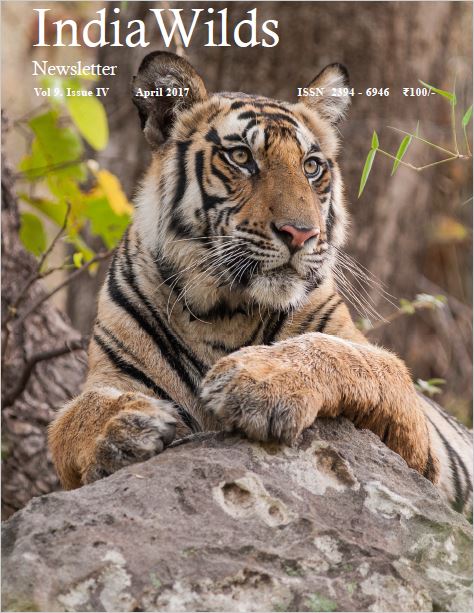
IndiaWilds Vol. 9 Issue IV Coverpage – April2017
German Philosopher Immanuel Kant had said:
“Two things fill the mind with awe;
The starry sky above us
And the moral law within us”
Unfortunately, two things have changed since these words were spoken in the late 1700s. The starry sky above us is not always visible due to light pollution and the moral law seems to have vanished from the human breasts, at least from the political and self-professed religious leaders. Else, nothing can explain the continuing drama surrounding the devastation of Yamuna flood plains during the World Culture Festival on 11-13th March, 2016 and Art of Living’s complete refusal to take any responsibility for it.
According to the Art of Living, a huge 7 acre stage was constructed for the World Culture Festival. It is touted by Art of Living as the “world’s largest floating stage”. 3.75 million people from 155 countries are supposed to have attended. 36,603 artists performed in the stage and 3000 prominent dignitaries from different parts of the world attended the event.

Massive stage constructed for World Culture Festival with ground heavily consolidated and external materials used
Before the event a petition was filed with the National Green Tribunal (NGT) to stop it. NGT’s committee comprising Prof A K Gosain, Prof Brij Gopal, Prof C R Prabhu and Shashi Shekhar, secretary, Ministry of Water Resources had assessed that the Art of Living Foundation’s event could have a severe environmental impact and had said that “the entire ecological restoration of Yamuna’s (affected) sites must be completed within a year from the date of the completion of the festival”. It has suggested that 100 – 120 crores penalty should be kept in separate NGT monitored account. However, AOL was asked to provide an immediate environmental compensation charge of 5 crore rupees and pay once the damages were estimated after the event.
The World Culture Festival was organized in a massive scale and invitations were issued to the President and the Prime Minister. When the news of massive damage to the Yamuna flood plains by the Art of Living became public, the President Shri Pranab Mukherjee rightly decided to skip the World Culture Festival. However, the Prime Minister preferred to attend it. The fact that the Prime Minister was going to inaugurate the event was well publicized in the media and many at that time believed that the NGT would cave in and allow the event to be conducted. Finally, the NGT allowed the event to be conducted using the principle of “fait accompli” as lot of damage to the flood plains had already been done.
Now after nearly a year a seven member expert committee has filed a 47 page report and has suggested that the rehabilitation of the flood plains will take 13.29 crores and 10 years.
“Art Of Livings activities that led to the damaged/impacted flood plains include i) clearing of vegetation ii) leveling and compaction of the ground and filling up of water bodies iii) construction of the stage and other temporary seating iv) construction of ramps v) construction of pontoon bridges vi) construction of access roads, and vii) blocking the side channel of river Yamuna. These activities led to i) change in topography/habitat diversity ii) loss of waterbodies/wetlands iii) loss of floodplain vegetation and biodiversity iv) changes in substrata – nature of soil, consolidation and compaction, toxic substances and, v) degradation and loss of ecosystem functions.”
The report also says “It has been estimated that approximately 120 hectares (about 300 acres) of floodplains of west (right bank) of the river Yamuna and about 50 hectares (120 acres) floodplains of the eastern side (left bank) of the river have been adversely impacted ecologically at different magnitudes. These 170 hectares do not include parking lots near Barapullah drain…The ground is now totally levelled, compacted and hardened and is totally devoid of water bodies or depressions and almost completely devoid of any vegetation.
The report further talks about external material being used as those can have adverse impact “The area where the grand stage was erected (and the area immediately behind it) is heavily consolidated – most likely with a different kind of external material used to level the ground and compress it.”
Since “Huge amount of earth and debris have been dumped to construct the ramps for access from the DND flyover and from the two pontoon bridges across the Barapulla drain” removing those and safely disposing those in a designated place would be another challenge.
Earlier last year AOL had said “Art of Living has a huge regard for the environment. We have never violated nor do we have any intention to violate any laws of the country. We have followed and further undertake to follow all the guidelines, recommendations, directions of the honourable court and the authorities extending us the permission to hold the World Culture Festival”. However, Ravi Shankar through a facebook statement has tried to completely wash his hands of any responsibility.
Ravi Shankar’s Statement:
On 18th April in his facebook post Ravi Shakar has said:
“The NGT can never get over the blot it has brought on itself by delaying natural justice to the Art of Living and allowing its own committee to malign the law-abiding organisation in the media.
The Art of Living had obtained all the necessary permissions including the NGT’s. The application was pending before the NGT for 2 months before the event. They could have stopped the event in the beginning if they wanted to. It defies all principles of natural justice that you give permissions and slap a fine for not violating any rules! This is like giving a “challan” to someone on a green signal!
If at all any fine has to be levied, it should be levied on the Central and State Governments and the NGT itself for giving the permission. If the Yamuna was so fertile, fragile and pure they should have stopped World Culture Festival at the very beginning.
A historic program deserving of applause and appreciation is unjustly projected as a crime! Witnessed by 1.8 billion people all over the world and a massive turnout on the ground, a floating stage of 7 acres without any foundation (a marvel in itself!) the event polluted neither air, water nor land. The world over cultural programs are held on riverbanks.
The whole idea was to bring awareness to save the river. The Art of Living that has rejuvenated 27 rivers, planted 71 million trees, revived several ponds is being projected for destroying a dead river. What a Joke!
The silence of the so-called experts on the debris being dumped there and permanent structures coming around exposes their malafide intentions.
Over and above this, the closeness of the petitioner to the committee raises serious questions for which the Art of Living has filed a bias application, which is pending.
The saviors are called destroyers and the giver of justice is penalizing the honest! Thanks to technology, all allegations against the Art of Living stand disproved by the data available on Google Earth since last 10 years.
I invite all honest environmentalists to study the case and unveil the truth.
I have full faith in the Indian judiciary and am confident that our courts shall uphold the truth and penalize all responsible for the extreme defamation and harassment that has been meted out to the Art of Living.”
Ravi Shankar has claimed that he got all permissions. Unfortunately, it is an outright lie.
DDA (Delhi Development Authority) had given a conditional permission to hold the World Culture Festival, which is against the NGT orders of 13th January 2015. DDA’s permission had a condition that AOL should get prior permission from NGT for holding the function and also DDA had mentioned that no activity should be carried out within 100 meter from water channel. Unfortunately, Art of Living never took prior permission from NGT before starting construction and they also violated the condition of DDA regarding no activity to be carried out within 100m from water channel. Since conditions are violated, the DDA permission is not valid.
Since NGC had on 13th January 2015 in a case (Manoj Misra vs Union of India & others) specifically imposed restrictions on any activity in the Yamuja Flood plains, DDA’s order was bad in law. Also, it should be noted that if a permission is bad in law, then whether it has been granted out of ignorance of other laws or obtained by fair or unfair means doesn’t matter, as the permission is not valid if it is bad in law.
Ravi Shankar clearly believes that Yamuna is a “dead river” and not “fertile, fragile and pure” as he has said “If the Yamuna was so fertile, fragile and pure they should have stopped World Culture Festival at the very beginning.” On one hand he believes that Yamuna

Yamuna in Stone – 8 th Century, Madhya Pradesh, National Museum
is a dead river and on the other hand he says that he was conducting the festival to raise awareness about the river. If you don’t believe that the river is facing ecological challenges then why do you need to raise awareness about it? Also, his website states that World Culture Festival was done to celebrate the 35th year of existence of Art of Living. So He has to tell us which of his statements is right.
It would be pertinent to remind Ravi Shankar that in March 2017, the Uttarakhand High Court bench comprising Justice Rajeev Sharma and Justice Alok Singh has recognised river Yamuna along with Ganga as living beings and having rights as juristic persons. Invoking the sacred text Rig Veda, the Uttarakhand High Court said that “the rivers have provided both physical and spiritual sustenance to all of us from time immemorial”. They are “breathing, living and sustaining the communities from mountains to sea”. This is supposed to grant legal rights similar to that of a human being.
You can’t kill a river while raising awareness about it.
The art of living claims itself to be an organization that works for environment conservation. However, it seems either Art of Living doesn’t understand the concept of ecologically fragile areas or the theme of environment conservation is just a facade. If spreading awareness to Save the Yamuna is indeed the motto, then you can’t take in 37.5 lakh people to an ecologically fragile area, compact it and completely destroy it. Thank God, Ravi Shankar doesn’t have any such ideas of taking 37 lakh people to places like Kedarnath to bring awareness about the fragile health of the place.
Who should be punished?
Ravi Shankar has the gall to say that the National Green Tribunal as well as Central and State Governments should pay the fine as they allowed it to conduct the event. This reminds us of criminals committing a heinous crime like rape and murder after being released on bail and then accusing the judiciary for releasing him on bail. Despicable!
Nevertheless, questions should also be raised as to why DDA didn’t dismiss the Art of Living application and gave a conditional permission. It is known that these kinds of conditional permissions are given by officials to give themselves an escape route if such a need ever arises. Now that Ravi Shankar in order to defend himself is attacking the DDA which illegally helped him, the concerned DDA officials should also be hauled up for violation of NGT orders.
Scrap “Fait accompli” policy loophole:
Why did NGT give the permission to hold the event on the basis of “fait accompli”? Despite substantial work of clearing of vegetation, leveling and compaction of the ground, filling up of water bodies, construction of the stage and other temporary seating and construction of access roads, the NGT could still have stopped the festival. Atleast that would have prevented the 3.75 million people entering into the area and stopped the area from being further compacted by the weights of all these people.
Even if substantial work had been done earlier, the NGT should have put its foot down to stop the event. Only when the iron hand of law comes down heavily on the violators of environment and wildlife laws, the violations will continue under some pretext or other using the “fait accompli” loophole.
Why did NGT feel helpless? When the National Green Tribunal has been created under a special act of parliament and acts as the judicial body below the Supreme Court, why did it feel helpless? Or is it because it was a high profile event to be inaugurated by the Prime Minister and made the NGT feel helpless? The Delhi Chief Minister and Deputy Chief Minister, despite being always on loggerheads with Prime Minister Narendra Modi , were remarkably in sync about this festival. At times people manning important positions may buckle under pressure, however, we certainly don’t expect NGT and other judicial bodies to bow down to political pressure. When that happens, it will be very bad for the democracy.
AOL in tune with Charvaka Philosophy:
If raising awareness about the perilous health of a river was the aim, then what was the need to organize such a massive jamboree which left behind a trail of destruction that will need atleast a decade of committed effort to restore? The philosophy behind organizing the World Culture Festival appears to be more akin to Charvaka’s hedonistic or materialistic philosophy, which is normally summarized by the oft-quoted statement
“Yaavat jeevet, sukham jeevet
rinam kritva, ghritam pibet”
(One should live happily till you are alive, even if you need to take a loan to enjoy the pleasures of life like eating ghee).
It should be noted that Charvaka school of philosophy has been derided by other Philosophical schools of thought as being hedonistic. May be in this materialistic age, since religious gurus have become more corporatized and since where possession of material wealth is regarded as more important than moral values, conducting such a jamboree is more important in their eyes. Nevertheless, this is not in tune with the philosophy embodied in the Gita or preached by Buddha and not so long ago by Mahatma Gandhi.
Interestingly On 24th of December 2016, Pope Francis, the current Pope of the Roman Catholic Church had said Christmas has been “taken hostage” by dazzling materialism that puts God in the shadows and blinds many to the needs of the hungry, the migrants and the war-weary. “If we want to celebrate Christmas authentically, we need to contemplate this sign: the fragile simplicity of a small newborn, the meekness of where he lies, the tender affection of the swaddling clothes. God is there,” “Jesus was born rejected by some and regarded by many others with indifference. Today also the same indifference can exist, when Christmas becomes a feast where the protagonists are ourselves, rather than Jesus; when the lights of commerce cast the light of God into the shadows; when we are concerned for gifts, but cold toward those who are marginalised.”
“This worldliness has taken Christmas hostage. It needs to be freed.”
These are powerful words and had never before been spoken by any other Pope. Perhaps working with the poor and downtrodden in Latin America has shaped the views of Pope Francis. Nevertheless, Pope’s message about reducing conspicuous consumption and doing away with hedonistic pleasure seeking behaviour during religious celebrations is in tune with Indian philosophy, which was not evident in AOL’s massive function.
God-men, Enlightenment & Immanuel Kant’s Philosophy:
In India Today, self-proclaimed God men of different religions are increasingly taking the law into their hands. With millions of followers these god-men wield enormous power and want us to believe whatever they say to be the absolute truth. They want to be known as the enlightened one.
However, “Enlightenment is man’s emergence from his self-incurred immaturity” wrote Immanuel Kant in 1784.
Kant had said that Imaturity is self-inflicted not because of lack of understanding but because of lack of courage to use one’s own reason, intellect and wisdom without the guidance of another person. So Kant had suggested “Sapere aude” or dare to be wise. He had also talked about “religious immaturity”.
According to Immanuel Kant “religious immaturity is the most pernicious and dishonorable variety of all”… “As things are at present, we still have a long way to go before men as a whole can be in a position (or can ever be put into a position) of using their own understanding confidently and well in religious matters, without outside guidance. But we do have distinct indications that the way is now being cleared for them to work freely in this direction, and that the obstacles to universal enlightenment, to man’s emergence from his self-incurred immaturity, are gradually becoming fewer.” These words written in 1784, some 232 years ago has lot of relevance for India Today.
Unfortunately even educated people and others whose opinion matter, have generally preferred to keep quiet on commenting on the actions of these so-called enlightened god-men.
In 2016 just before the World Culture Festival was to be conducted, Ravi Shankar had made numerous claims about his organization doing the event to save the Yamuna. Ravi Shankar had even made an outlandish claim that all the families attending the event will bring a home made concoction – prescribed by art of living – which will be poured into the Yamuna to clean it. Despite such ridiculous excuses a majority of the people kept quiet. Any other person or organization would have been thoroughly ridiculed for such cock and bull stories and would have been hauled up over the coals.
Clearly the educated, well-to-do people, thought leaders and intelligentsia refuse to use their logic or reason to decide for themselves if something is good or not. And even when they use their logic, intellect and wisdom to deduce whether something is good or not, they prefer to remain mum. So in philosopher Immanuel Kant’s words, these people prefer to remain in self-inflicted immaturity.
It has been close to 70 years of independence since the British rule, however, many people still fear authority. They fail to challenge the ideas and actions of most officials and reputed persons, even when the actions of those people and organisations are blatantly bad. Certainly this is not a healthy sign for a country, which loves to proclaim itself as the world’s largest democracy.
Is there any hope?
A country which was blessed with some of the best natural heritage is fast losing out on those as its leaders have preferred to sacrifice those primarily for the benefit of industries and infrastructure creation. The last two Prime Ministers, Manmohan Singh during UPA I and II and Narendra Modi in the present Government and their ministers, have preferred to justify sacrificing our natural heritage for infrastructure, roads, canals, dams, ports and industries. The rate of pace of environmental degradation has been the highest these days. With faster penetration of internet many people are now able to access information through smart phones. So if an environment can be created which is conducive to free thinking and voicing those thoughts, then the common man with lower chance of getting favours from the authorities and influential people can decide to speak their minds. After all in the famous story “The Emperor’s New Clothes” it was a small girl who had pointed out that the King had no clothes!
Gujarat Tourism breaks the law: Promotes illegal racing with Wild Ass
Gujarat Tourism has issued an advertisement which has got tremendous negative impact on the wild ass and other species. The text of the advertisement states “Race with the beautiful Neelgai, the Indian Wolf, Pelicans, the Desert Fox, Greater Flamingos, larks, the Indian Vulture and Wild Ass at Little Rann of Kutch. The photo shows some Wild ass running and Amitabh Bacchan holding a camera. The creative is designed in such a way that the portions of the text “Neelgai, the Indian Wolf, Pelicans, the Desert Fox, Greater Flamingos, larks, the Indian Vulture and” is in smaller font. So the bigger font is separately read and immediately the long text is shortened and registered in the minds of people as “Race with the beautiful Wild Ass at Little Rann of Kutch”.
Mr Amitabh Bachchan is an iconic figure and has tremendous brand power. His endorsement results in an indelible impression in the mind. When a few years ago Amitabh Bachchan came in the Gujarat Tourism advt, people started flocking to dhordo/white sands. Now people will go to Little Rann of Kutch (LRK) and race their jeeps with the Wild Ass.
When you move your jeep close to the Wild Ass, they move away. When you race towards them, they start galloping away. When you continue to race the jeep along with them, they keep on galloping at their top speed. This can be “fun” for some people, however, it is certainly not funny for the wild ass. No one loves to be chased. It increases their adrenalin flow in the body. The species gets tensed. In the hot desert climate every species wants to conserve their energy. When the Wild Ass has to run for the sake of fun for some people, they quickly expend their energy and if it continues for longer period they can get exhausted. It is injurious to their health and they can also collapse.
Racing with the Wild Ass can also result in accidents. As such there are way too many road kills of wild animals in every part of the country. In the Rann of Kutch, due to the sparse vegetation, people drive fast and the animals race to cross the road. In LRK, I was surprised to see a huge herd of Neelgais running and crossing the road infront of us. They appeared threatened by the sight of the jeep. It appeared to me that there have been instances of people racing with them so that the Neelgais are now prone to run.
During the British era, they used to race with Neelgai’s, Blackbucks, Wild Ass etc and sphere them for fun. As such there are already a few people who are trying to race with the wild ass to find their top speed. There are also photographers who want to take photos of wild ass racing towards them and position their cameras on the ground and instruct others to chase the wild ass towards the camera. They are doing it when no one else is watching. With the Gujarat Tourism officially promoting racing with Wild Ass, this activity will acquire legitimacy. We hope the brutal and hedonistic days of the British is not recreated by racing with the Wild Ass.
As per IUCN, The Wild Ass (Equus hemionus khur) is a near threatened species. It is protected under the Wildlife Protection Act. Racing or chasing a protected species is against the law. People who promote it for tourism and people who participate in it are breaking the law. Promoting illegality through an advertisement is a crime. Any private agency instead of Gujarat Tourism would have by now been prosecuted. However, since Gujarat Tourism is a Government agency, and since many times Government agencies have been able to murder wildlife and get away with it, all we can do is urgently request Gujarat Tourism and the Government of Gujarat to withdraw the advertisement and issue a clarification.
A lot of damage has already been done as normally clarification doesn’t reach the people. If Gujarat Tourism wants to be responsible, then they should rather promote the wildlife and highlight their plight. So they should instead promote images of wild animals trying to avoid speeding vehicles like this image of a Jungle Cat trying to evade a car.
When we love something or somebody, we take care to protect. So if highlighting the iconic Wild Ass was the intention, then Gujarat Tourism should have highlighted the love and bonding between this species. After all adrenalin rush is momentary but love transcends time.
Conservation News:
New Species of Plant Identified in Araku Valley
A new plant species has been identified in the Araku valley of Eastern Ghats. This species belongs to the Emilia Cass. (Asteraceae) family. This plant grows up to 85 cm tall and has dark pink to violet coloured flowers. The plant flowers between September and February. This plant was found at a height of 1245 meters above MSL.
This discovery of the new Emilia Cass. Species was done by researchers K. V. Satish of National Remote Sensing Centre Hyderabad and Prakasa Rao Jonnakuti of Andhra University Botany department. The species have been named Emilia reddyii in honour of C. Sudhakar Reddy of National Remote Sensing Centre.
We have narrowed down to the family and compared it with three other species of the family and found 23 distinct characters. Usually six characters are sufficient to name a new plant. However, when the researchers compared this plant with three other species of the same family they found 23 distinct characters. The researchers first came to know of this plant in 2013. However it took them several years to validate their finding by conducting secondary research using various books as well as by checking with experts.
The researchers found that the plant is found in a very limited area. So they have classified Emilia reddyi as critically endangered. The researchers compared satellite images from 1973 with that of 2015 to study long-term ecosystem changes. “The result of habitat evaluation showed that natural vegetation occupies an area of 91.7 km2 (65.0%) of the total study area. Amongst the natural vegetation, Phoenix savannah (P. loureirii gregarious) is the predominant land cover which occupies an area of 26.1 km2 (18.5%), followed by scrub (24.0 km2 / 17.0%), semi-evergreen forest (22.4 km2 /15.8%), moist deciduous forest (15.5 km2 /11.0%), and dry deciduous forest (3.7 km2 /2.6%).”
The researchers say “Understanding the long-term effect of anthropogenically induced changes in the ecosystem is essential for effective conservation of native biodiversity. In the present study, it was observed that the habitat of E. reddyi is under extreme pressure due to massive forest cover change and other anthropogenic impacts. The primary cause of deforestation is due to the expansion of agriculture considerably up to an area of 11.0 km2 (25.9 – 33.6%). Total forest loss was estimated at 9.1 km2 which was 18.0% of the total forest area. Semi-evergreen forest lost an area of 5.4 km2 (19.4%), followed by moist deciduous, dry deciduous, Phoenix savannah, and scrub with loss of 3.1 km2 (16.9%), 2.6 km2 (14.0%), 0.2 km2 (0.6%), and 1.9 km2 (7.4%), respectively.”
Significant rate of deforestation and land cover changes were observed in the present study. The semi-evergreen forest underwent deforestation with 0.51% annual rate of loss, followed by moist deciduous and dry deciduous with 0.44% and 0.36% respectively. The scrub showed 0.18% annual loss. Agriculture has drastically extended with an annual rate of 0.62%. Barren land and orchards extended 0.55% and 0.31% respectively. The analysis proved that there is a strong footprint of anthropogenic threats
The Eastern Ghats is not as well explored as the Himalaya and Western Ghats. Even in a well explored place like Western Ghats many new species are discovered. With the researchers finding such alarming loss of forest cover as well as drastic annual rate of loss of forest cover, it is important that not only largely unexplored place like the Eastern Ghats get more research projects but more importantly urgent steps needs to be taken by the MoEF&CC as well as State Governments to preserve the Eastern Ghats for posterity.
New Species of Tree-dwelling crabs discovered in Western Ghats
A new species of wholly arboreal crabs have been discovered in the western ghats.
A new genus and new species of tree crab is described from the Western Ghats biodiversity hotspot in Kerala, southern India. Kani maranjandu is substantially different from all congeners in a suite of characters, notably the diagnostic carapace and male abdominal structure, as well as the conspicuously elongated ambulatory legs. The species is wholly arboreal, living in tree-hollows or the canopy. This has been described in a paper titled “Description of a new genus and new species of a fully arboreal crab (Decapoda: Brachyura: Gecarcinucidae) from the Western Ghats, India, with notes on the ecology of arboreal crabs” and published in The Journal of Crustacean Biology by authors Biju Kumar, Smrithy Raj and Peter K. L. Ng.
This crab has been named after the Kani tribe who reported these sightings to the researchers. Maranjandu is the Malayalam name for tree crab. This was found during a two year fresh water crab survey which started in 2014.
Prior to this discovery we knew that crabs can climb trees. Crabs, especially some species of crabs found in mangroves often climb the trees to escape high tides. However, till date it was known that some species of crabs can be fully arboreal.
Dr. Biju Kumar, the principal author of the study said “as water holding hollows in large trees are essential for the survival of this unique species, the discovery also stress the need for conservation of large trees in the degraded forest ecosystems of the Western Ghats. It also highlights how little we know about the actual biodiversity that resides in these forests and the efforts that must still be made to find and study the many undoubted new species that still live there.”
Western Ghats is a bio-diversity hot-spot. Despite many research projects mounting field visits, there are many species that remain undiscovered. Each researcher team focus on their own area and it is not possible for researchers to identify and report new species belonging to other orders.
J&K High Court Suggests Dal Lake Fund to Save the Dal Lake
The J&K High Court division bench comprising Justice Ramalingam Sudhakar and Justice Ali Mohammad Magrey while hearing a PIL filed by environmental activist Syed Tahir Iqbal Geelani in 2002, has suggested forming a not-for profit trust like “Dal Lake Fund” to help restore and preserve the Dal Lake.
Some time ago, we had floated the idea of using the Corporate Social Responsibility (CSR) scheme of corporates to fund for wildlife and environment causes. As per Union Ministry of Corporate Affairs, Corporates with minimum networth of rupees 500 crores or turnover of 1000 crores or net profit of 5 crores in any financial year need to spend 2% of their average net profit of the preceeding three years on CSR. (https://www.indiawilds.com/diary/indiawilds-newsletter-vol-6-issue-ix/) The learned judges of HC are aware of this clause. They said “We further suggest the Monitoring Committee to consider and recommend to the Government as to whether non-profit trust can be formed like Dal Lake Fund. It can be given the task of restoration of the Dal. Fund for the said trust can be sourced from the Central as well as the State Governments from corporate who are willing to provide funds under the Corporate Social Responsibility (CSR) scheme”.
They also observed “It has come to our notice that various corporate have joined hands to safeguard the environment, the water, the agrarian land the forest the ecosystem etc. A group of private corporate with the guidance of the World Wildlife Fund have created a network called the India Water Stewardship Network (IWSN) which focuses on Good water governance, Sustainable water balance and Good water quality”
“These are the few suggestions that the Court would like to make so that global attention is diverted to the preservation of Dal lake. These suggestions may be considered in addition to the steps already taken by the State of J&K to restore the beauty of the Dal lake, the beauty and heritage of Jammu and the Kashmir Valley, considering the fact that it is one of the most favoured tourist destination”.
The court also noted that the Sewage Treatment Plants (STPs) “were not functioning effectively and needed to be upgraded”. The court asked for “Restructuring and refurnishing of existing STPs should also be examined. By any chance the existing STPs are stopped, the impact it may have on pollution in Dal lake will be irreversible.”
It asked the authorities to rope in non-governmental and other organisations “for technical experience” and to install CCTV cameras “to strengthen” the LAWDA’s Enforcement Wing.
Hearing the PIL, the J&K High Court has given many suggestions from time to time and it also mentioned the fact in its order. “By an earlier order of this court, a monitoring committee has been constituted inter alia on a mandate to arrest the pollution and damage caused due to the discharge of waste elements. To remove encroachment and to take steps to restore the beauty and pristine nature of Dal lake. There are many issues addressed by this court from time to time and the order are in volumes”.
We are very happy that when the Government and citizens are failing in their duties, the Judiciary is taking up the onerous task of saving our natural heritage for our future generations. For this it deserves a huge round of applause.
NBWL approves Uranium Survey & Exploration in Amrabad Tiger Reserve
The standing committee of the National Board for Wildlife (NBWL) which these days virtually rubber stamps all proposals for denotifying and divesting part of forest areas for dams, canals, mines, industries etc has given clearance for conducting Uranium survey and exploration in over 83 Sq. km of the Amrabad Tiger Reserve of Telengana.
Amrabad Tiger Reserve is in parts of Amrabad and Udimilla in Nagarkurnool district and in Narayanpur in Nalgonda district. This tiger reserve is estimated to have 18 tigers and now there will be tremendous disturbance on their habitat and hence on their survival. However, the NBWL justified its move in tearing up Amrabad Tiger Reserve by saying that uranium mining is of strategic importance to this country and hence the tiger reserve needs to be sacrificed.
If the Uranium mining survey and exploration is successful then large parts of the Tiger Reserve is expected to be denotified and completely destroyed.
NBWL approves NH-12 Widening near Panna
The NBWL has permitted diversion of 40 hectares of Nauradehi Wildlife Sanctuary for widening of NH-12 near Panna Tiger Reserve. This land will be used to upgrade the two lane road to four lane.
The Madhya Pradesh Chief Wildlife Warden Mr. Jitendra Agarwal mentioned that the area for road widening does not form part of any corridor and is located on the south of the Nauradehi WLS though it is a part of Nauradehi WLS. As expected, the NBWL cleared the four-laning project.
It is to be noted that Nauradehi wildlife sanctuary was to be added to Panna Tiger Reserve. Earlier when the disastrous Ken-Betwa river linking project was cleared, the NBWL had accepted the proposal of WII (Wildlife Institute of India) to add Rani Durgavati, Ranipur, Mahavir Swami Wildlife Sanctuary and Nauradehi Wildlife sanctuary to Panna. With this move the NBWL is further reducing the existing protected areas that need to be merged with the Panna Tiger Reserve.
NBWL approves road widening in Pakhal Wildlife Sanctuary
NBWL has approved widening a 13.8 km stretch of the National Highway NH-365 passing through Pakhal Wildlife Sanctuary. The Pakhal Wildlife Sanctuary is located 54 kilometers away from Warangal and covers an area of approximately 860 Sq. kms. It was established in 1952. It has a manmade lake which is said to be completed by the royal Kakatias in 1213 AD.
This road widening is to be done on the NH 365 linking Nakerrekal and Mallampally. Due to the road widening inside the sanctuary, 51 acres of the forest land will be sacrificed for the road widening project. Since the NH authorities never consider uprooting and replanting the mature hard growth trees due to cost reasons, about 5000 trees will need to be cut down.
The NBWL while clearing this road widening proposal has said that adequate safe passages in the form of over-bridges and under-bridges needs to be constructed for movement of wild animals. National Highway authorities are known to not agree to any mitigation proposals and put pressure to reduce the mitigation measures even in highly fragile tiger habitats. So one can safely assume how much mitigation measures would be actually taken in these lesser known sanctuaries.
Water bodies in Aravalli range to be filled up by Tankers
Due to peak summer, the water bodies in the Aravalis are drying up. So the Haryana Forest Department will fill up the waterbodies in the Aravali range in Gurgaon and Faridabad using water tankers. The forest department feels this will help in preventing the wild animals in moving into human habitations to quench their thirst.
Recently a leopard had been lynched in a village. So the forest department doesn’t want similar situations to recur. A leopard and two cubs were recently seen in a private gulf club in Gurgaon.
Generally the water bodies dry up by june. However, this year the temperature has been consistently high. Also deforestation is happening at an increasing pace. Illegal mining changes the topography of the land and the traditional underground water channels dry up impacting the water bodies. The sight of Badkhal and Damdama lakes in Faridabad and Gurgaon’s Sohna lake will make one sad as they are just a pale shadow of the huge exapansive lakes they were in the past. Badkhal lake is heavily impacted because the natural water channel opening has been blocked at Bania Khan village due to illegal mining. So the forest department has choosen 40 places in Aravalli range where animals are known to frequent.
Wetlands – An Eternal Abode for Avifauna
By Dr.Hiren B. Soni
The term “Wetland” is used for diverse habitats in different climatic zones of the earth, which is indeed difficult to define in simple term. The International Union for Conservation of Nature and Natural Resources (IUCN) defined “Wetlands” broadly for the purpose of the Ramsar convention on ‘Wetlands of International Importance’ as:
“Wetlands are areas of marsh, fen, peatland or water, whether artificial or natural, permanent or temporary, with water that is static or flowing, fresh, brackish or salt, including areas of marine water, the depth of which at low tide does not exceed six meters”.
For more details click on the below link:
The Last GIBs of Gujarat
By Dr. Devesh Gadhvi
The Great Indian Bustard, popularly known by the short-form GIB, is a majestic but threatened Indian bird. Today less than 250 GIBs are left on the face of earth. Standing one meter tall, this bird prefers to live in the grasslands during its breeding season (during monsoon in Gujarat), and for the rest of the time of the year i.e. during winter and summer, it prefers to live in open undisturbed land and/or harvested fields of Sorghum and Millet.
For more details click on the below link:
Book Review
Book Review: Mammals of South Asia Vol. 1 & Vol. 2
Equipment Discussions:
Canon Announces the CN-E 70-200 T4.4 L IS KAS Lens
https://www.indiawilds.com/forums/showthread.php?18242
Zeiss announces new CP.3 and CP.3 XD Cine lens family
Canon Introduces the EF-S 35mm f2.8 Macro IS STM Lens with Microlites
Canon has announced a EF-S 35mm lens with f2.8 Macro IS STM lens. This EF-S lens will fit in to all the DSLRs with 1.6 crop factor sensors like the 1100D/750D/80D/7D series.
Since it is a 35mm lens, for macro photography, one needs to move in very close to the subject with this lens. The minimum focusing distance of this lens is 30cm. For shooting at such short distances, any living subject has to be incredibly cooperative to allow such violation of personal space. So this lens appears to be primarily designed for food photography, plants etc that will not move away from you. For more details check the below link:
https://www.indiawilds.com/forums/showthread.php?18253
or download the Full PDF.
Canon Introduces the C-Log in 5D Mark IV camera
Sound Devices Launches compact Audio Recorders MixPre-3 & MixPre-6
Sound Devices launches compact audio recorders MixPre 3 and MixPre 6
Nikon Announces D7500 DSLR camera with 4K video
Sony announces Alpha A9 Full Frame mirrorless camera with stacked sensor
Sony announces Alpha A9 Full Frame mirrorless camera with stacked sensor
Canon launches PowerShot SX730 HS with 24-960mm zoom
To read the full articles for the below equipments:
Nitrotech N8: Manfrotto Launches Nitrogen filled fluid head
Samsung Gear 360 4K 360 degree Video camera
GoPro Fusion: 5.2K 30p virtual reality video Camera
Rotolight launches AEOS Ulta-portable LED light for portraits
SlingStudio multi-camera live broadcasting on budget
Download the Newsletter PDF by clicking the below button –
Wilderness Updates
People and wildlife of Eastern Himalaya – My journey to some remote village of Batasia
By Samrat Sarkar
Natural History
COUNTRY NOTEBOOK: M. Krishnan: ‘LEOPARD‘ By Saktipada Panigrahi
https://www.indiawilds.com/forums/showthread.php?8852-Country-notebook-m-krishnan&p=83182#post83182
Wildlife Photography
Himalayan Tahr by Prashobh Ailyam Nair
https://www.indiawilds.com/forums/showthread.php?18212-Himalayan-Tahr
Hog Deer from Manas by Debasis Bose
https://www.indiawilds.com/forums/showthread.php?18193-Hog-Deer-Manas
Leopard in Kabini by Jitendra Katre
https://www.indiawilds.com/forums/showthread.php?18153-Leopard-in-Kabini
Cheetal deer by Shyamala Kumar
https://www.indiawilds.com/forums/showthread.php?18200-Bambi-It-is-all-about-famly
Golden Langur from Manas by Debasis Bose
https://www.indiawilds.com/forums/showthread.php?18159-Golden-Langur-Nearby-Manas
Lammergeier or Bearded Vulture by Prashobh Ailyam Nair
https://www.indiawilds.com/forums/showthread.php?18213-Lammergeier-Bearded-Vulture
Common hawk Cuckoo by Samrat Sarkar
https://www.indiawilds.com/forums/showthread.php?18188-Nature-s-symphony
Black-faced-Laughingthrush by Sandipan Ghosh
https://www.indiawilds.com/forums/showthread.php?18204-Black-faced-Laughingthrush
Grey Heron by Raj Dhage
https://www.indiawilds.com/forums/showthread.php?18194-Killer-(-Grey-heron-)
Rufous-breasted Accentor by Abhishek Jamalabad
https://www.indiawilds.com/forums/showthread.php?18182-Rufous-breasted-Accentor
Peacock by Abhirup Dutta Gupta
https://www.indiawilds.com/forums/showthread.php?18189-Peacock-in-kanha
Crested Serpent Eagle by Jerin Dinesh
https://www.indiawilds.com/forums/showthread.php?18174
Common Grass Yellow by Arun Acharjee
https://www.indiawilds.com/forums/showthread.php?18202-The-Yellow-Winged-Fairy
Trying to blend in by Prajwal Ullal
https://www.indiawilds.com/forums/showthread.php?18185-Trying-the-best-to-blend-in
Time flies. 2009 looks like yesterday. We first started producing the IndiaWilds Monthly Newsletter in January of 2009. This is the 100th issue. We have been writing on wildlife preservation and environmental issues to not only raise awareness about current issues but also included natural history, wildlife book reviews, as well as camera, sound and film equipment discussions for photographers, sound recordists and filmmakers so that anyone trying to learn and document about our amazing natural history can do so easily. Our magazine has grown in size and at the same time unfortunately our environment and wildlife is facing its biggest challenge.
Conservation challenges are so big now that one feels outnumbered and has a massive prayer in the lips for reinforcements. Our generation has largely failed in protecting India’s amazing bio-diversity. We only hope that in this continuing battle, we can raise awareness and convert more people to the cause, so that conservationists can fight a good battle.
I look forward to your inputs and support in raising awareness and preserving the last tracts of wilderness and wildlife left in our beautiful country.
Regards,
Sabyasachi Patra
Profile | Contact Us | Facebook | Diary | Equipment reviews | Forums | IndiaWilds You Tube Channel
Please post your views and feedback in the comments below.
- Canon Launches Cine Servo 11-55 mm T2.95-3.95 lens - 10 September,2025
- Water Monitor Lizard in Sundarbans - 14 May,2025
- Radio collared Tigress - 30 January,2025

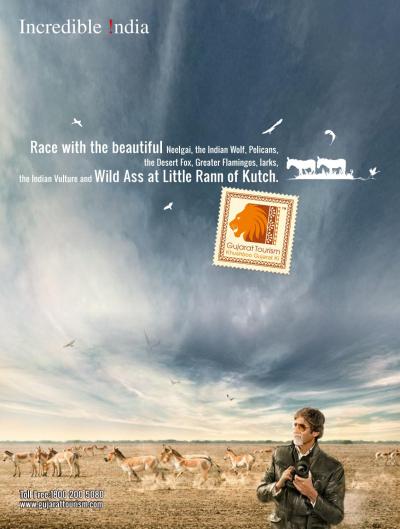
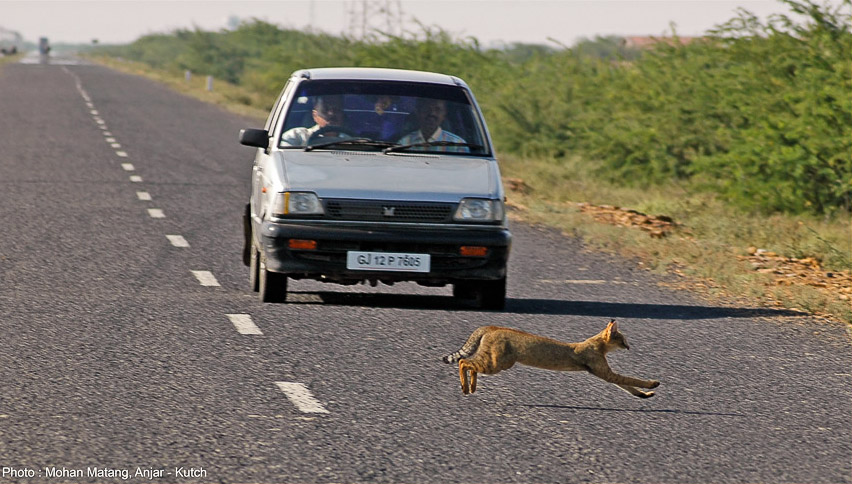

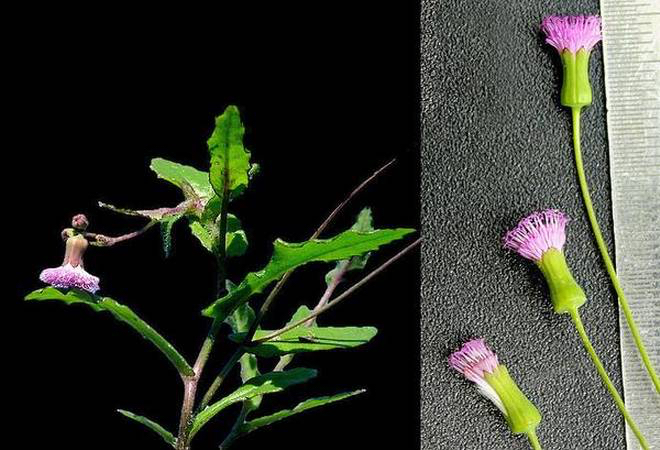
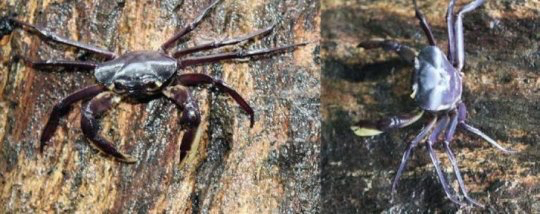
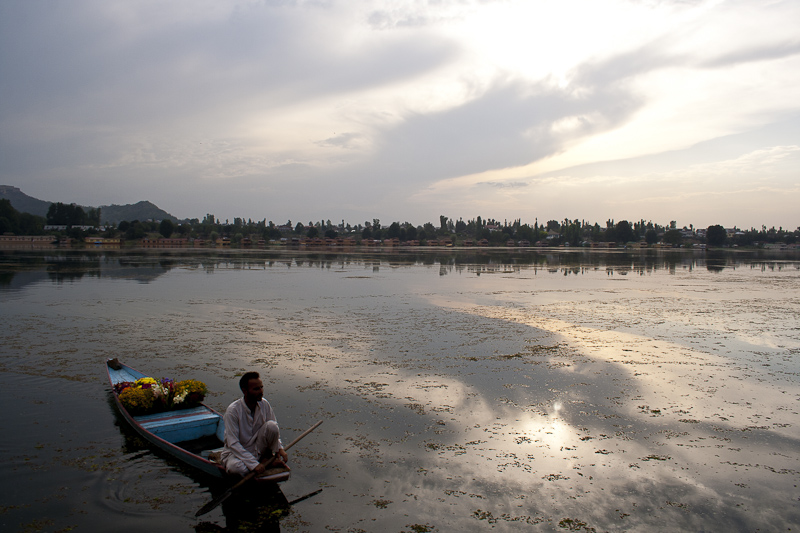






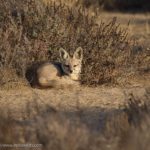





Very informative articles Sabyasachi! Thank you for your efforts!